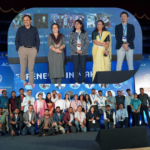On this World Polio Day, it’s essential to recognize the persistent threat posed by poliomyelitis, especially in the wake of recent polio incident witnessed in Meghalaya, India1. Polio, a highly infectious viral disease which spreads through faecal–oral transmission and primarily affects children under five, leading to irreversible paralysis and, in some cases, death2.
Despite decades of progress, the disease remains a global health risk, particularly for nations like India, which are polio free, however must remain vigilant to avoid resurgence3.
Dr Mahesh Sulakshane, Consultant Pediatrician and Neonatologist, Dr Sulakshane Multispeciality Clinic, Pune, Maharashtra notes, “The Inactivated Polio Vaccine (IPV) offers essential protection from a virus that can paralyze for life. Vaccinating from 6 weeks onward gives children the best chance of immunity3.”
India’s success story—12 years of being polio-free—has been an extraordinary public health achievement, facilitated by massive immunization drives3. According to WHO, in lieu of Polio eradication in India, around 1 billion doses of polio vaccine were administered annually to 172 million children over the course of four years leading up to the last case3.
Yet, recent incidents of polio resurfacing in parts of the world raise a crucial concern: India cannot afford to let its guard down3.
Dr. Sulakshane explains, “While India has been polio-free for over a decade, the virus still exists in some parts of the world. The possibility of it re-entering India, particularly with global movement, is a constant concern.”
The Indian Academy of Paediatrics Advisory Committee on Vaccines and Immunization Practices (IAP ACVIP) stresses the need to strictly follow the recommended vaccination schedule. This includes a birth dose of oral polio vaccine (OPV), an inactivated polio vaccine (IPV) at 6, 10, and 14 weeks, followed by boosters at 16-18 months and again at 4-6 years4. Adherence to this schedule is critical to maintaining individual and herd immunity.
India, with its large population and high-density areas, faces a particular risk if the disease is reintroduced.
Dr. Sulakshane adds, “A high vaccination rate ensures that polio remains at bay. Without it, we risk undoing the remarkable progress we’ve achieved, leaving the door open for a resurgence.”
On World Polio Day, the message is clear: vaccination is the key to preventing a resurgence. By maintaining high immunization rates and supporting public health initiatives, India can continue its fight against polio and protect future generations from this preventable disease. The global goal is within reach, but only if every nation—including India—remains steadfast in its commitment to eradicating polio once and for all 3,5
Disclaimer: “A public welfare initiative supported by Sanofi & Dr Reddy’s Laboratories Ltd. Please consult your physician for medical advice”.





